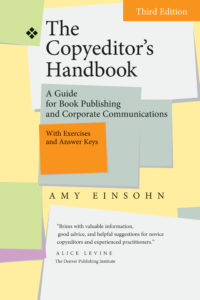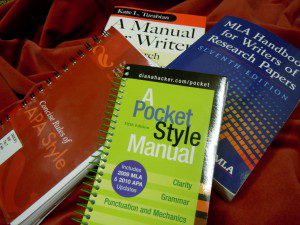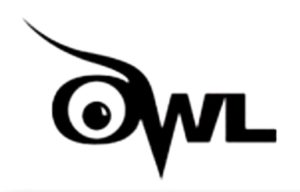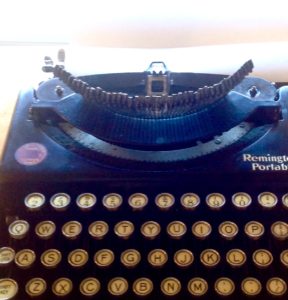 Sometimes my clients, often those who have worked with me before, can be clear from the outset about the kind of editing they are looking for, but generally speaking, their needs become clear through a dialogue at the beginning of the process.
Sometimes my clients, often those who have worked with me before, can be clear from the outset about the kind of editing they are looking for, but generally speaking, their needs become clear through a dialogue at the beginning of the process.
It is very helpful at that point to have some terms and editing concepts in common. Editors will often refer to light, medium and heavy copyediting. I’ll give you a rough sketch of what they mean by these terms. Every editor will have a personal take, but in the industry there is enough general consensus for them to be in common use. I’m indebted to The Copyeditor’s Handbook, 3rd edition, by Amy Einsohn, for a succinct exposition of these terms. If you are an editor, or are interested in editing, and don’t have this book – get it. You can click on the image for more information.
In a light edit, the editor will deal with all mechanical issues – spelling, punctuation, capitalization, etc. – and with outright grammatical errors. The editor won’t revise paragraphs for wordiness or convoluted language, but will point out such issues. Factual inconsistencies and possibly incorrect statements will also get noted in a light edit.
In a medium edit, the editor will of course address all the issues addressed by a light edit. In addition, they will point out awkward syntax, wordiness, and convolution – suggesting and supplying revisions. At the medium editing level, the editor will also begin to address questions of structure and logic – noting and querying only, however.
In a heavy edit, the editor will go ahead and revise what was queried or noted in a light or medium edit, rewriting convoluted or wordy sections, revising incorrect facts, and fixing poor organization.
While these are rough categories, they provide valuable reference points as you develop understanding with your editor.
 Much of what I do with my clients’ writing falls into the category of “copyediting.” It is a technical term, so I’ll give a brief explanation of what it means and what it doesn’t.
Much of what I do with my clients’ writing falls into the category of “copyediting.” It is a technical term, so I’ll give a brief explanation of what it means and what it doesn’t. It can be very hard to finish a thesis or dissertation. These are by definition long projects, and graduate students often find themselves in situations that work against completion. Not finishing has become so common that the acronym, “ABD” (All But Dissertation), is now used in many job postings. These days – due in part to the rise in the number of online and low-residency graduate degree programs, and in part to cuts in academic programs that leave fewer tenured and tenure-track advisors with less time for their graduate advisees – degree candidates often find it very hard to develop effective working relationships with those who are designated to help them complete.
It can be very hard to finish a thesis or dissertation. These are by definition long projects, and graduate students often find themselves in situations that work against completion. Not finishing has become so common that the acronym, “ABD” (All But Dissertation), is now used in many job postings. These days – due in part to the rise in the number of online and low-residency graduate degree programs, and in part to cuts in academic programs that leave fewer tenured and tenure-track advisors with less time for their graduate advisees – degree candidates often find it very hard to develop effective working relationships with those who are designated to help them complete.
 I recently worked with a client on a business case for a government agency. It was a rather big project and I was called in at the last minute – two days before the deadline. I generally decline to edit in emergency situations, because what one can offer in such cases, aside from light copy-editing and proofreading, is relatively little value for the cost. In this case I was able to help improve the document and get it in under the wire. The project set me to thinking about what an editor can do for writers at different stages of their process.
I recently worked with a client on a business case for a government agency. It was a rather big project and I was called in at the last minute – two days before the deadline. I generally decline to edit in emergency situations, because what one can offer in such cases, aside from light copy-editing and proofreading, is relatively little value for the cost. In this case I was able to help improve the document and get it in under the wire. The project set me to thinking about what an editor can do for writers at different stages of their process. I don’t like the word “procrastination.” It has some nasty sounds in it, but more importantly for me, it connotes a moral failure – not a grand one, but rather a petty little moral failure, one I wouldn’t want to claim even in an antihero sort of way. Failing through procrastination feels like I imagine Gulliver felt when he was defeated by the tiny Lilliputians. I’ve been brought down, more often than I like to admit, because I let the little moments go by while the work sat undone.
I don’t like the word “procrastination.” It has some nasty sounds in it, but more importantly for me, it connotes a moral failure – not a grand one, but rather a petty little moral failure, one I wouldn’t want to claim even in an antihero sort of way. Failing through procrastination feels like I imagine Gulliver felt when he was defeated by the tiny Lilliputians. I’ve been brought down, more often than I like to admit, because I let the little moments go by while the work sat undone. As I look out over the top of my screen at the rain falling steadily into the back garden, I’m thinking about the special relationship between writing and rainy weather. If there is an iconic writing scene, it is the writer alternately scribbling and gazing contemplatively out into a wet landscape through the running drops on a windowpane. The wet weather keeps our bodies inside while our minds wander out through scenery made subtle and mysterious by the dimming and diffusion of light, by quivering little reflections, and by the quietness of it all. The sounds of water on the roof and on the windowpane fill those spaces in my mind that otherwise tend to chatter and echo as I settle in to compose a few sentences. The infinite variability of the rain falling, striking and running, which is at the same time continuous and repetitive, inspires in me a particular kind of imaginative freedom. So, yes – an old sweatshirt, a cup of strong coffee, and my cat at my feet on a rainy October afternoon in Portland make for this writer’s heaven.
As I look out over the top of my screen at the rain falling steadily into the back garden, I’m thinking about the special relationship between writing and rainy weather. If there is an iconic writing scene, it is the writer alternately scribbling and gazing contemplatively out into a wet landscape through the running drops on a windowpane. The wet weather keeps our bodies inside while our minds wander out through scenery made subtle and mysterious by the dimming and diffusion of light, by quivering little reflections, and by the quietness of it all. The sounds of water on the roof and on the windowpane fill those spaces in my mind that otherwise tend to chatter and echo as I settle in to compose a few sentences. The infinite variability of the rain falling, striking and running, which is at the same time continuous and repetitive, inspires in me a particular kind of imaginative freedom. So, yes – an old sweatshirt, a cup of strong coffee, and my cat at my feet on a rainy October afternoon in Portland make for this writer’s heaven.